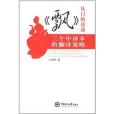內容簡介
杜曉燕所著的《從目的論談飄三個中譯本的翻譯策略》以目的論為切入點,以《飄》的三個中譯本為研究對象,系統研究了不同譯者的翻譯策略,指出目的論是引導譯者工作的重要原則。作者首先敘述了原著《飄》的寫作背景,然後介紹了該書的主要故事情節,最後分別介紹了三個譯本不同的譯者背景以及翻譯年代。作者指出,讀者要求、時代背景等因素對譯者有重大影響。作者還介紹了目的論的主要思想,並闡釋了該理論在翻譯中的套用。本書理論可靠,例子充分。
圖書目錄
Introduction
Chapter One Overview of Translation Studies
1.1 What Is Translation and Translation Studies
1.2 A Brief History of the Translation Studies
1.3 An Overview of Translation Theories
Chapter Two A Brief Introduction of Skopos Theory
2.1 The Definition of Skopos Theory
2.2 The History of Skopos Theory
2.3 Basic Concepts of Skopos Theory
2.3.1 Theory of Action
2.3.2 Skopos, Aim, Purpose, Intention and Function
2.3.3 Intertextual and Intratextual Coherence
2.3.4 Culture
2.3.5 Adequacy and Equivalence
2.4 The Basic Rules of Skopos Theory
2.5 Merits, Discussions and Limitations of Skopos Theory
2.5.1 Merits
2.5.2 Discussions
2.5.3 Limitations
2.6 Skopos Theory and Literary Translation
2.6.1 Actional Aspects of Literary Communication
2.6.2 Literary Communication Across Cultural Barriers
2.6.3 Skopos and Assignment in Literary Translation
Chapter Three A Brief Introduction of Gone,with the Wind and
Its Three Chinese Versions as well as the Skepes
of the Author and the Translators
3.1 An Introduction of Gone with the Wind
3.1.1 The Author
3.1.2 The Author's Writing Intention
3.1.3 The Novel
3.2 An Introduction of the Three Chinese Versions of
Gone with the Wind
3.2.1 Fu Donghua and ,His Translation Skopos
3.2.2 Chen Liangting and His'Translation Skopos
3.2.3 Li Meihua and Her TranSlation Skopos
Chapter Four A Comparative Study of the Translating Strate—gies of the Three Versions from the Perspective
of Skopos Theory
4.1 General Description of Different Translating Strate—
gies Adopted by the Three Versions to Realize the
Principles of Skopos
4.1.1 Fu Donghua's Translation Strategies
4.1.2 Chen Liangting's Translation Strategies
4.1.3 Li Meihua's Translation Strategies
4.2 Strategies Adopted to Facilitate Intended Readers'
Comprehension of Gone with the Wind
4.2.1 Translation of Universe of Discourse on the Lexical Level
4.2.2 The Domestication or Foreignization of Certain
Sentence Structures on the Syntax Level
4.2.3 Translation of Metaphors and Simi!es on the Rhetorical Level
4.2.4 Addition and Deletion of Information
4.3 Strategies Adopted to Eacilitate Readers' Aesthetic Acceptance
4.4 Strategies Adopted to Realize the Principle of Loyalty
4.4.1 Translators' Fulfillment of Responsibility for the Source Text Sender
4.4.2 Translators' Fulfillment of Responsibility for the Target Readers
Chapter Five Conclusion
References
Postscript

